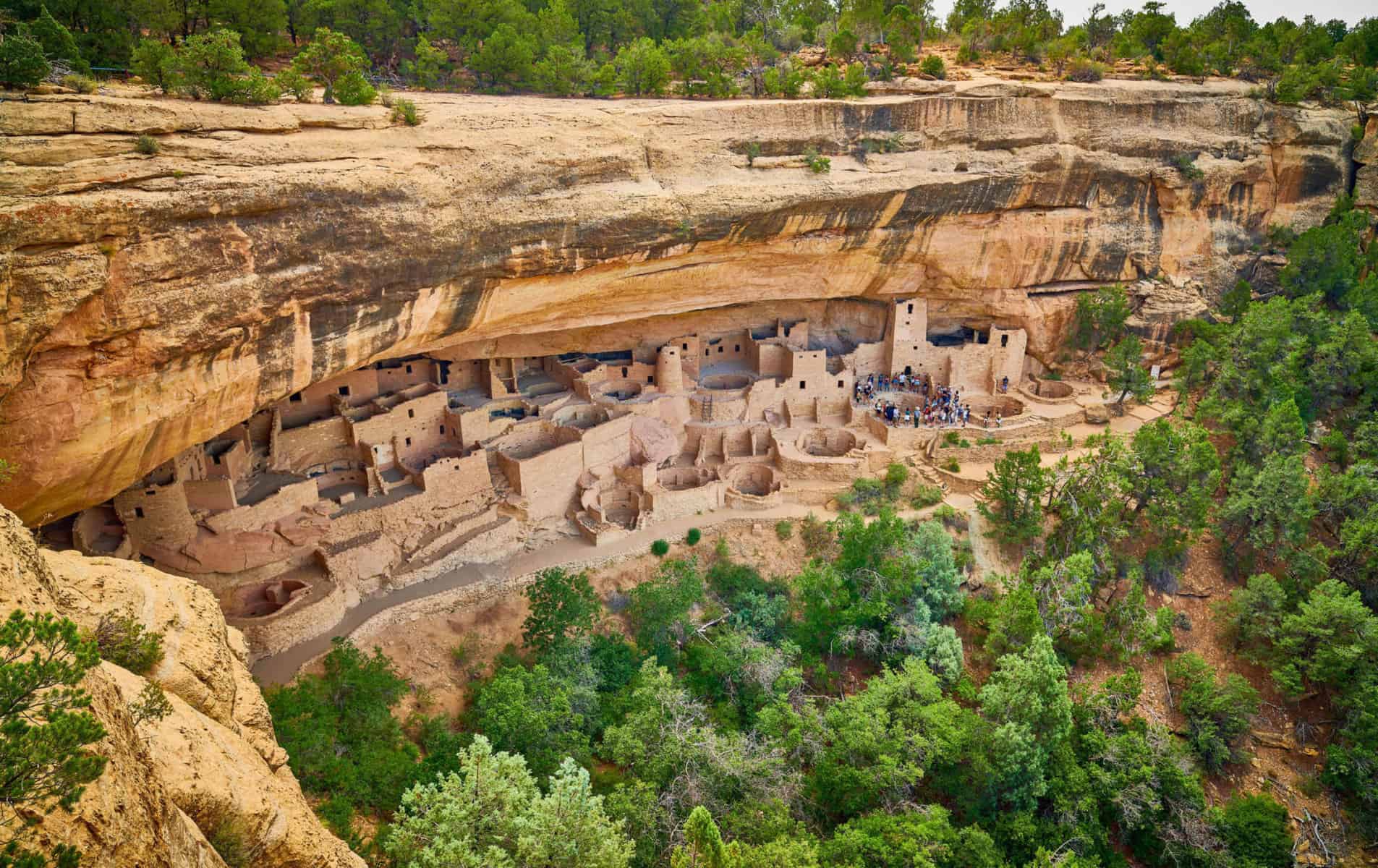
Who were the Anasazi? The Anasazi, also known as the Ancestral Puebloans, were an ancient Native American culture that thrived in the Southwestern United States. They are famous for their unique cliff dwellings and intricate pottery. Why are they important? Their innovative agricultural techniques and impressive architectural feats have left a lasting legacy. What can we learn from them? By studying the Anasazi, we gain insights into ancient engineering, community living, and adaptation to harsh environments. Where did they live? Their settlements spanned across present-day Utah, Arizona, New Mexico, and Colorado. When did they exist? They flourished from approximately 100 AD to 1600 AD. Ready to dive into 29 amazing facts about the Anasazi? Let's get started!
Key Takeaways:
- The Anasazi were an ancient Native American culture known for their cliff dwellings, advanced agriculture, and rich society. Their legacy continues to influence modern Native American cultures and archaeology.
- Despite their mysterious disappearance, the Anasazi left behind a lasting legacy in the form of architectural techniques, pottery, and sustainable farming practices. Their art and symbolism reflect their beliefs and way of life.
Who Were the Anasazi?
The Anasazi were an ancient Native American culture that lived in the southwestern United States. They are known for their unique cliff dwellings and advanced agricultural techniques. Here are some fascinating facts about this mysterious civilization.
- The Anasazi lived in the Four Corners region where Utah, Colorado, Arizona, and New Mexico meet.
- They are also known as the Ancestral Puebloans.
- The name "Anasazi" means "Ancient Ones" or "Ancient Enemy" in Navajo.
Anasazi Architecture
The Anasazi are famous for their impressive architectural achievements, particularly their cliff dwellings and pueblos.
- They built their homes into the sides of cliffs for protection from enemies and the elements.
- Mesa Verde in Colorado is one of the most famous Anasazi sites, featuring over 600 cliff dwellings.
- The largest cliff dwelling, Cliff Palace, had about 150 rooms and 23 kivas (ceremonial rooms).
- They also constructed large, multi-story buildings called "great houses" in Chaco Canyon, New Mexico.
Anasazi Agriculture
Despite living in a harsh desert environment, the Anasazi developed advanced agricultural techniques to sustain their communities.
- They practiced dry farming, relying on rainfall to water their crops.
- Corn, beans, and squash were their primary crops, often referred to as the "Three Sisters."
- They built intricate irrigation systems to channel water from rivers to their fields.
- They also used check dams and terraces to control soil erosion and conserve water.
Anasazi Society and Culture
The Anasazi had a rich and complex society with unique cultural practices and social structures.
- They lived in small, close-knit communities, often consisting of extended families.
- Kivas were central to their religious and social life, used for ceremonies and gatherings.
- They created beautiful pottery, often decorated with intricate black-on-white designs.
- They were skilled weavers, producing textiles from cotton and yucca fibers.
- They traded extensively with neighboring tribes, exchanging goods like turquoise, shells, and pottery.
Anasazi Mysteries
Despite extensive research, many aspects of Anasazi life remain shrouded in mystery.
- Around 1300 AD, the Anasazi suddenly abandoned their cliff dwellings and great houses.
- The reasons for their migration are still debated, with theories ranging from drought to social upheaval.
- Some believe they integrated with other Native American tribes, such as the Hopi and Zuni.
- Their disappearance has led to numerous legends and speculations about their fate.
Anasazi Legacy
The Anasazi left a lasting legacy that continues to influence modern Native American cultures and archaeology.
- Modern Pueblo tribes, like the Hopi and Zuni, consider themselves descendants of the Anasazi.
- Their architectural techniques, such as adobe construction, are still used today.
- Anasazi pottery and artifacts are highly valued by collectors and museums.
- Their agricultural practices have inspired sustainable farming methods in arid regions.
- The study of Anasazi sites has provided valuable insights into ancient human adaptation to challenging environments.
Anasazi Art and Symbolism
Art and symbolism played a significant role in Anasazi culture, reflecting their beliefs and way of life.
- Petroglyphs and pictographs are found throughout the Anasazi region, depicting animals, people, and abstract designs.
- These rock art images are believed to have spiritual or ceremonial significance.
- They also created intricate jewelry from turquoise, shell, and other materials.
- Their art often featured motifs related to nature, such as rain, animals, and celestial bodies.
The Anasazi Legacy Lives On
The Anasazi left behind a rich legacy that continues to fascinate us today. Their impressive cliff dwellings, advanced agriculture, and intricate pottery showcase a culture that was both innovative and resilient. Despite their mysterious disappearance, the Anasazi's influence is still felt in the Southwest United States, where their descendants, the Pueblo people, carry on many of their traditions.
Exploring the Anasazi's history offers a glimpse into a world where humans adapted to harsh environments with ingenuity and cooperation. Their story reminds us of the importance of community, sustainability, and respect for the land. Whether you're a history buff or just curious, the Anasazi's achievements provide valuable lessons and a deeper appreciation for the ancient cultures that shaped our world.
Frequently Asked Questions
Was this page helpful?
Our commitment to delivering trustworthy and engaging content is at the heart of what we do. Each fact on our site is contributed by real users like you, bringing a wealth of diverse insights and information. To ensure the highest standards of accuracy and reliability, our dedicated editors meticulously review each submission. This process guarantees that the facts we share are not only fascinating but also credible. Trust in our commitment to quality and authenticity as you explore and learn with us.
